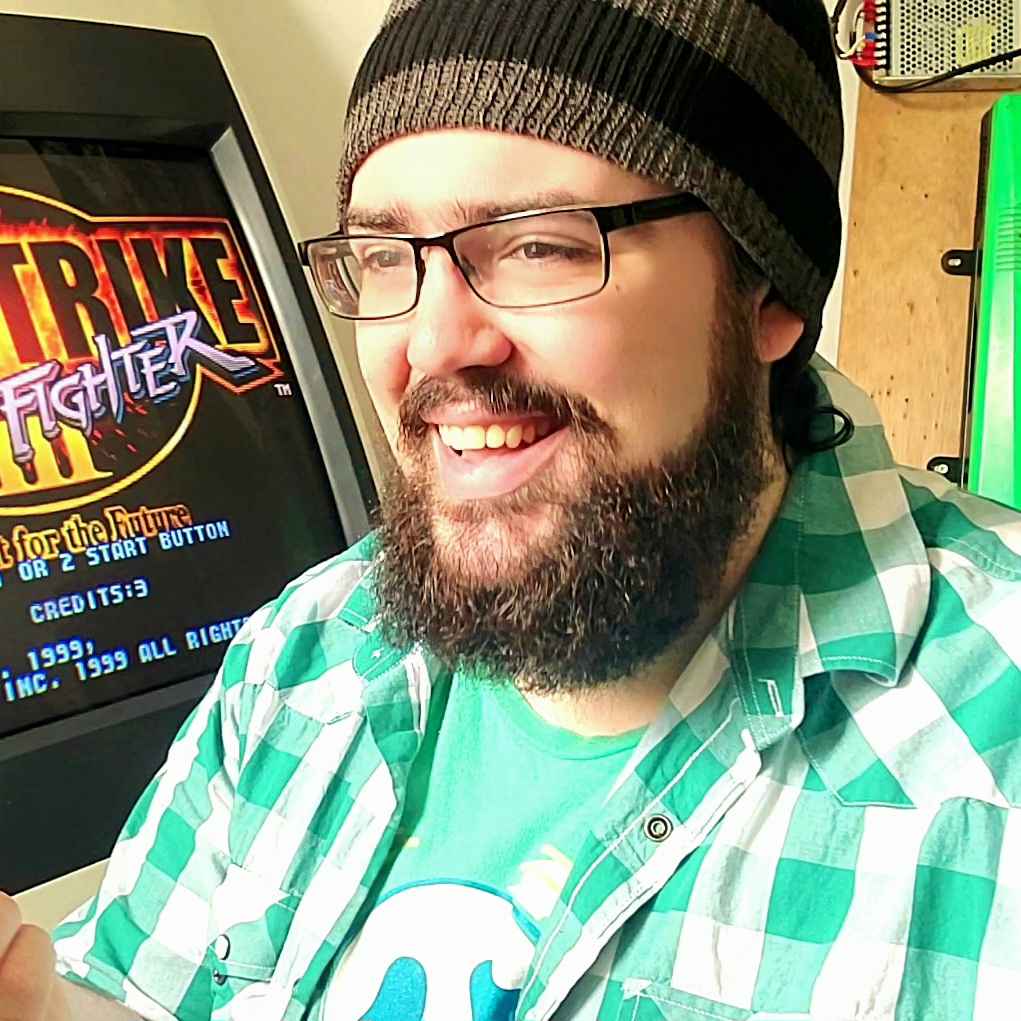REWARDING THE REGION
Since the boom of Street Fighter 2 in arcades, dedicated players have gathered to perfect their techniques and improve with others in their local communities. With the golden age of Arcades left in the past, organizing local[s] meetups has been the responsibility of individuals partnering with small businesses, or hosting gatherings in their homes with little incentive to attend.
Being a local organizer myself, I set out to finally create that reward system for my own community.
While this project is meant to utilize the start.gg API to obtain player data using their tournament creation system, all information in this case study is my own and does not reflect the views of Smash.gg.
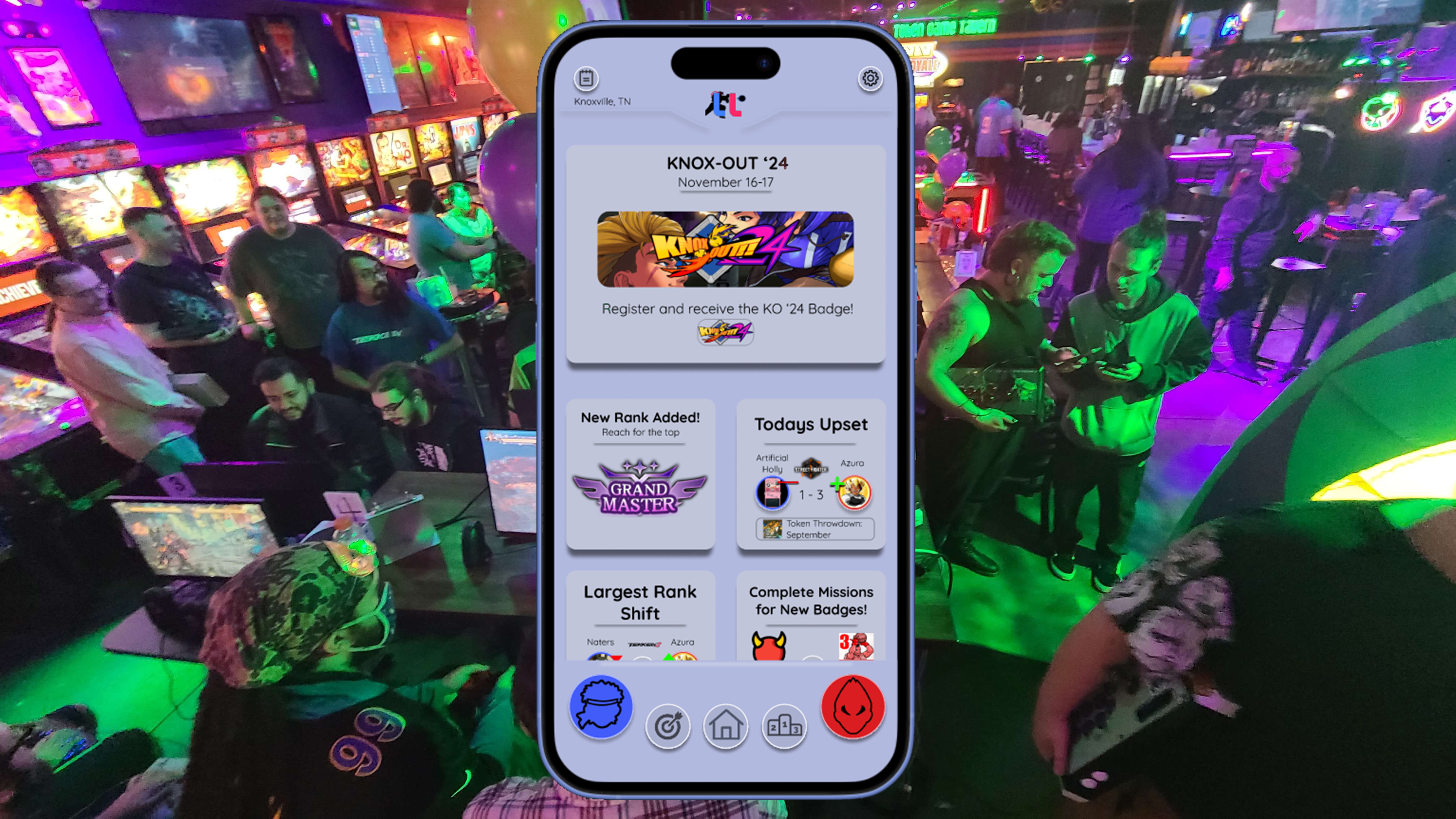
REBUILDING
For many dedicated players, attending community-ran in-person events is a cornerstone activity of the genre. Fighting Games like Street Fighter and Tekken thrive in social settings - players that truly care about their growth and strength in their respective games crave seeking skilled, regular competitiion to improve. Over the course of the Pandemic in 2020, however, much of the playerbase weakened and splintered as online play became the only option for many. Local organizers like myself had to rebuild our in-person communities from scratch.
The landscape had changed forever. Players now viewed online play as the default for the genre. There's a growing sentiment that many of us had to learn how to socialize all over again once many in-person restrictions were lifted, and as a result, it became a tough pitch to convince players to leave the comfort of their homes to see the value of their community.
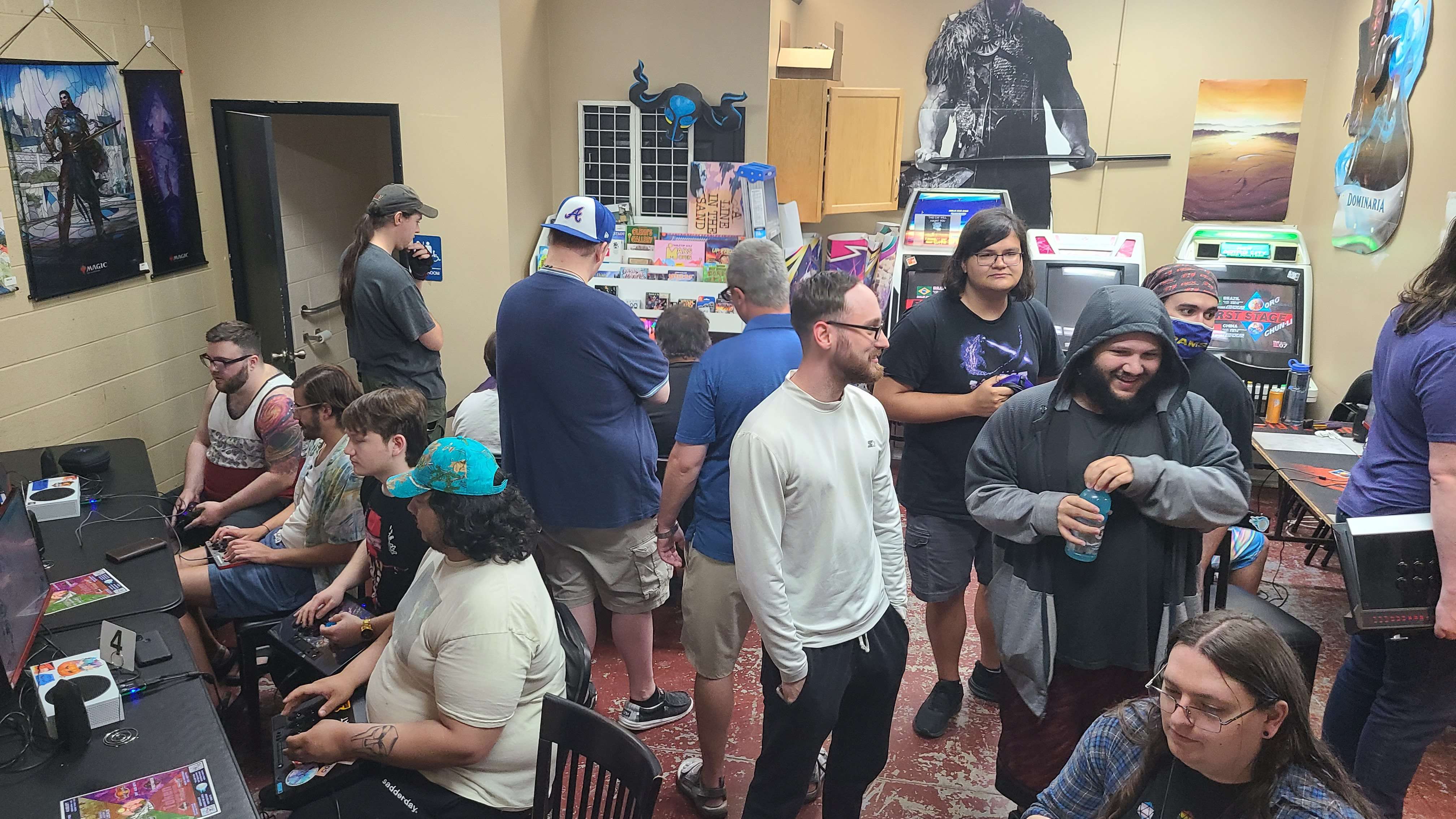
A Sunday "Level Up Locals" Meetup in Knoxville, TN.
THE CHALLENGE
ENCOURAGE THE NEW, GROW THE STRONG
The Pandemic splintering created two kinds of players, those that are entirely new to the genre or only picked it up while we were online-only (low experience), or those that played in person pre-pandemic, and are looking to advance their skills even further (high experience). Getting these two pools to interact is a hurdle, as the newer players don't want to get beaten into submission, while the more exerienced may deem the newer competition as not worth their time. The goal is to bring them both together and create common goals.
The main objectives for Local Legend are:
- Create a reward structure that encourages interaction between both groups of players.
- Reward regular attendence; showing up is half the battle.
- Make this process seamless with little user interaction.
MY ROLE
I began working on this project indipendantly in my final year of attendence at the University of Tennessee, and wanted to put forth what I had been working on in classroom settings towards a self-interest project prior to graduating in the winter of 2024.
As I was building this for my local community that I had taken on running around 2022, their participation was crutial for user testing and furthering design choices.
ROUND 1
DISCOVERY
Before jumping into design, I had to consider what kind of mutual ground these groups had, and define the most meaningful, relatable way to give them a common goal.
As our communities lead organizer, I'm constantly making mental notes on reasons why people in my area may not be attending in-person events. For some, it may be distance from the venue. For others, it's the economics of time spent and what they gain from that. Across my time, I've found all too often just how many people struggle with the concept of real growth in this hobby, and what that looks like in practice.
Since the dominance of online play, many Fighting Game players connect their percieved social status to a rank they've earned by playing online in their game of choice. The benefit of these systems is Skill-Based Matchmaking; ensuring they're always set to play against an opponent of roughly equal skill. In person, however, no such indicators exist, and the impending wave of anxiety begins to set in. Instead of enjoying the time spent intaracting with another person who shares your passions, players are often anxious about their performance - so much so that failing to meet their own expectations, or their theory-crafted expectations of what others may or may not believe, may be enough to destroy any interest in returning.
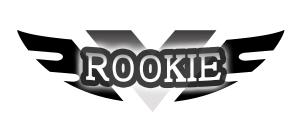
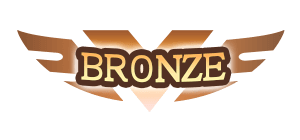
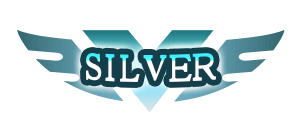
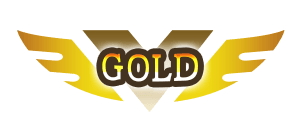
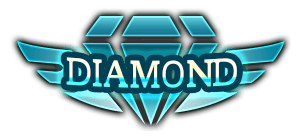
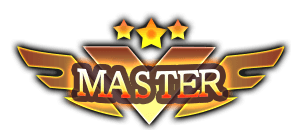
In other words, in order to achieve a newfound understanding of Growth Through Socialization, I decided to utilize a format that nearly all users are familiar with...
GAMEIFY THE GAME
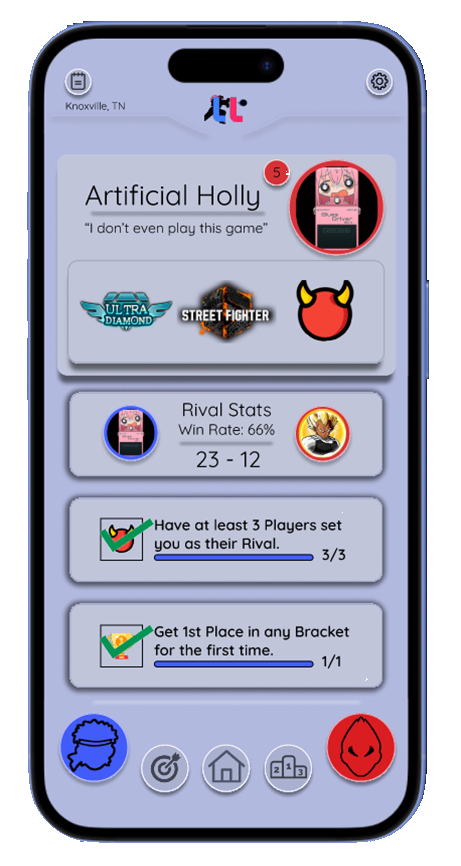
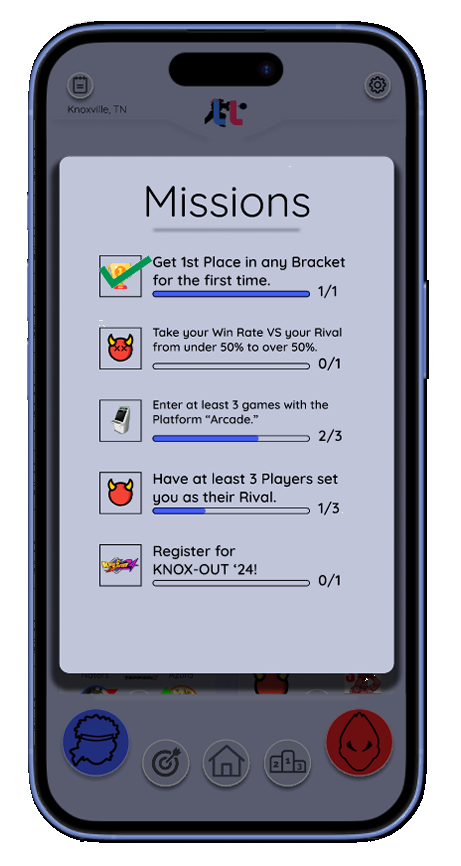

ROUND 2
INSIGHTS
While my intention was the only test with a small, trusted group of users(~5) from our regular playerbase(~40) during initial ideation, there was quickly excitement, questions, and deliberations from my community what would or could be on offer. While I did inevitably stick to a core 5 users to schedule some iterative testing with later on, having input at every stage of the project allowed for valuable insight that I wouldn't have otherwise considered throughout the process.
This lead to a preference towards Lean, collaborative UX. I would often take my notebook with me when setting up meetups and events, and take general notes, sketches, or offhand concerns when mentioned. Being able to do this kind of rapid sketching and iterations every other week or so helped strengthen my confidence in the direction the app was heading during the higher fidelity phases of the design.

A Sunday "Level Up Locals" Meetup in Knoxville, TN.
ROUND 3
A NEW MOUNTAIN
Being able to design for such a niche userbase allowed for me to immedietely begin researching user needs, pain-points, and key points of interest.
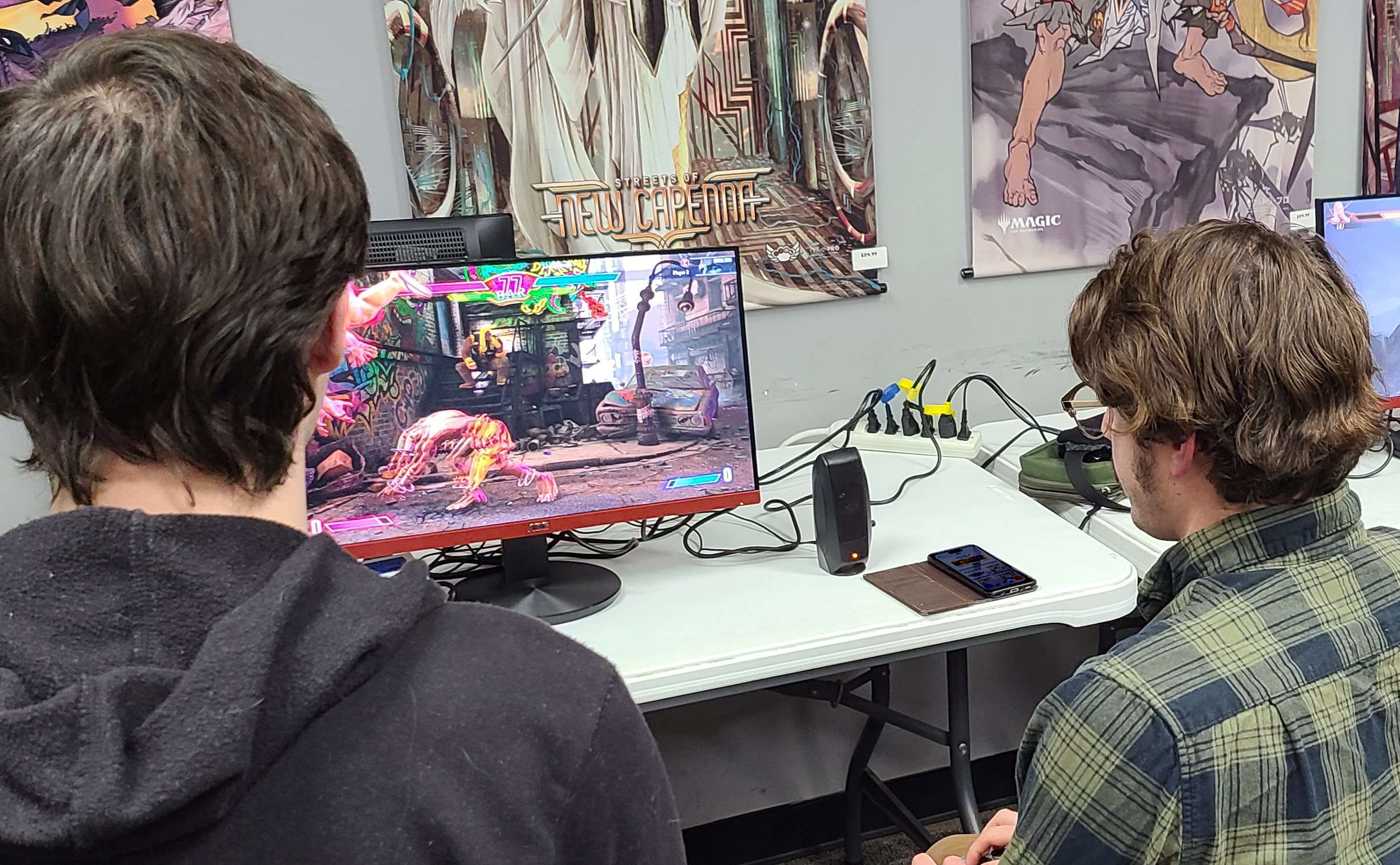
Match of SF6 being played with Local Legend left open.
This Research ultimately pointe to a desire to see who was the biggest target in the room, so to speak. While many did inquire about the original scheme, using the system as a means of keeping up with a specific sparring partner, many were more isnterested in setting a player as a Rival as a metaphorical mountain to climb. This was an incredible insight into my users Motivations, and lead to the "Rival Count" addition. Knowing how much a player was envied was valuable insight to both the userbase as well as the podiumed player in question.
This data was found through anonymous surveying of my regular attendees - they would submit their tags (nicknames) along with their opinions, which served as my example data during the different iterations of the design. The initial concept of Local Legend almost immedietely jumped to a "version 2" after the initial data collection. In order to follow the Hierarchy of needs effectively, I wanted to focus on a few key aspects that my users had highlighted through the aggregation of their feedback and motivations:
Simple - Gratifying - Encouraging
ALWAYS PUNCHING UP
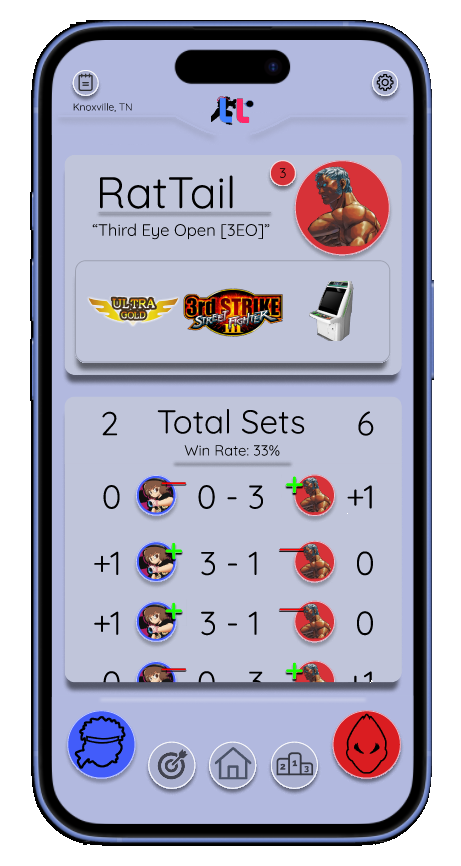

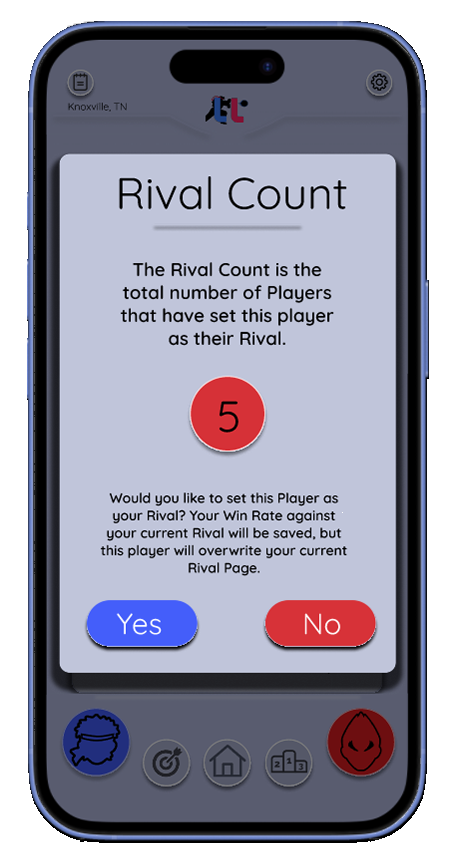
ROUND 4
PROCESS
Being able to keep every scenario in a real-world setting meant we were able to explore new concepts immedietely. Having earlier iterations out in the wild allowed us to roleplay using existing transitions and formats in new, more pleasant ways before the more practical user testing sessions.

One benefit to keeping this so well-rooted in the real world is: this is still about competition at it's core, and sometimes, you don't perform your best.
When considering some potential user journeys, I storyboarded a few routes, and realized that all roads led to the same outcome. Whether a player used the app or not, the social experience would still need to be tackled, and the app should just be trying to encourage and reward them for trying as much as they can. For more experienced players, they'll have the generated stats to reflect upon. For the mid-level players, they can have either the stats-focused route or social-focused route depending on their use case. For the brand new players, the social aspect has been discussed.
Cycle encouraged by Local Legend.
Much like a Gym membership designing new ways to have their users continue their subscriptions, its always ultimately up to the user as to whether or not they want to view their own metrics and be given a tool. Nevertheless, preparing these boards also allowed me to not prepare for any extreme Edge Cases.
ROUND 5
NARROW DOWN
I recruited 5 partitipants from my local FGC who had somehow miraculously NOT interacted with Local Legend at our events up to this point; at least not with its current design revision. The first portion of the test was conducted on a laptop in order to record their activity, expressions, qualitative commentary and remarks, as well as capture some rudementary eye-tracking to get a guage on the heat map data.
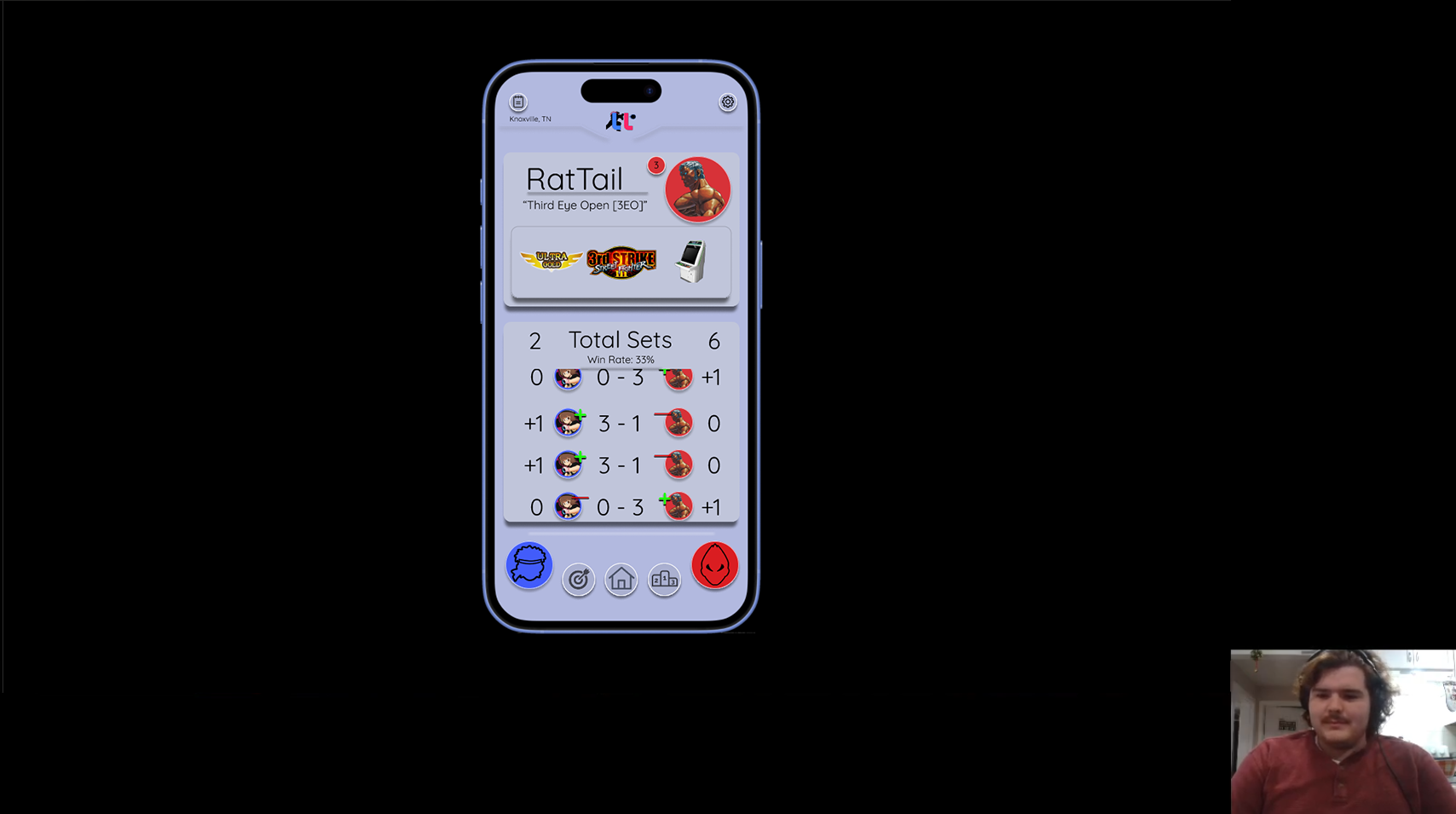
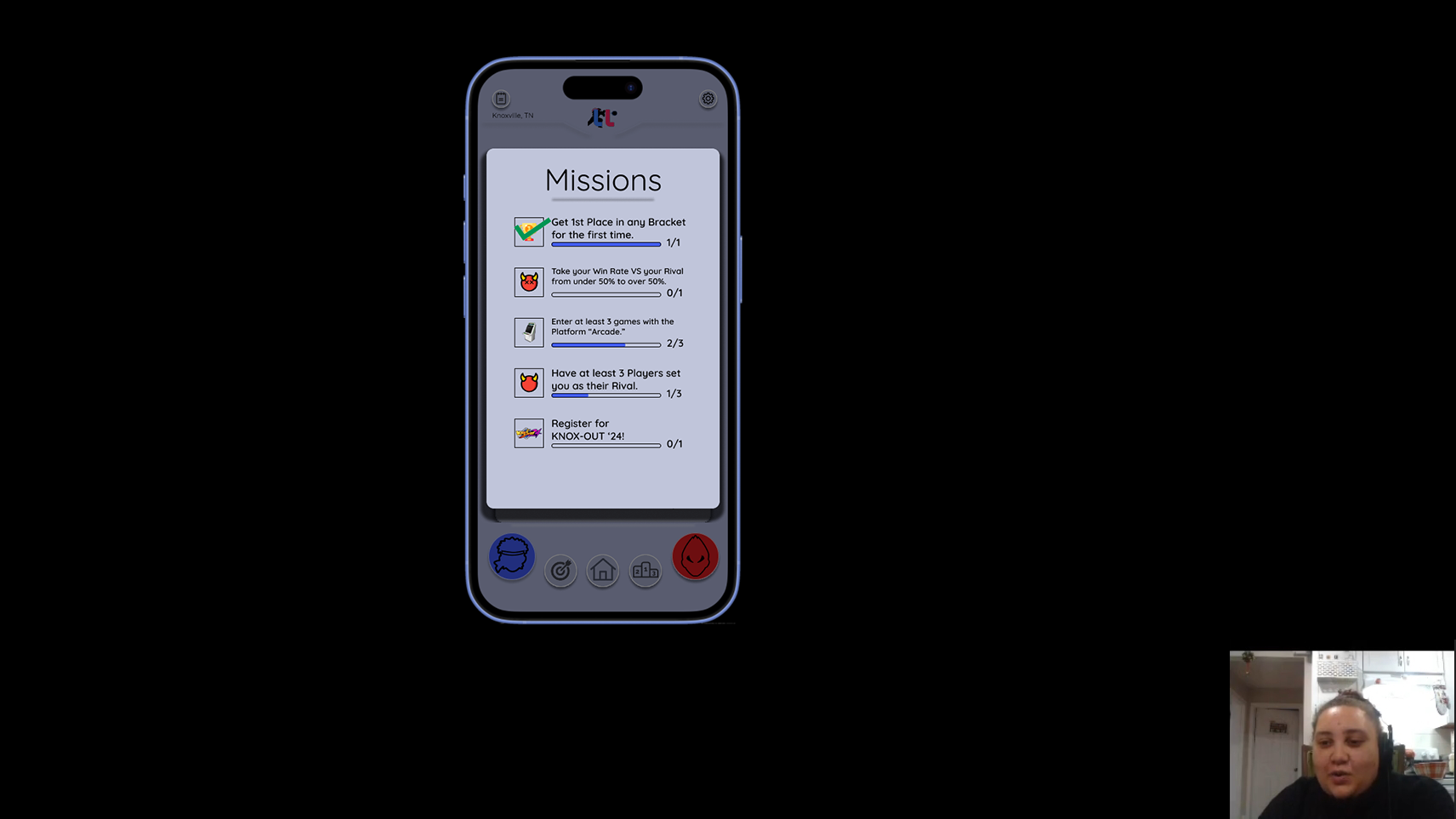
Screenshots of Heat Map Testing in a prototype session.
Each user at this point also used the software with images slightly altered to see their own accounts during this experience. Very minor addition, but in order to further push that last hierarchal need - meaningfuness - I wanted the users to be able to see their own basic identifiers and data to establish a personal connection. Or, alternatively, guage any negative reactions to their data being visible in this way.
With a nearly 100% task completion rate, I was pleasently relieved to see the work of all of the notetaking and sketching over the prior months come to fruition, and still seem very usable in the hands of the inexperienced. Users also enjoyed seeing the Badges associated with Missions - providing small, non-exhaustive rewards to even the small acts of being an active part in our community. It's with great pride that I believe I was able to stay true to the defining characteristics I began with:
Simple - Gratifying - Encouraging
